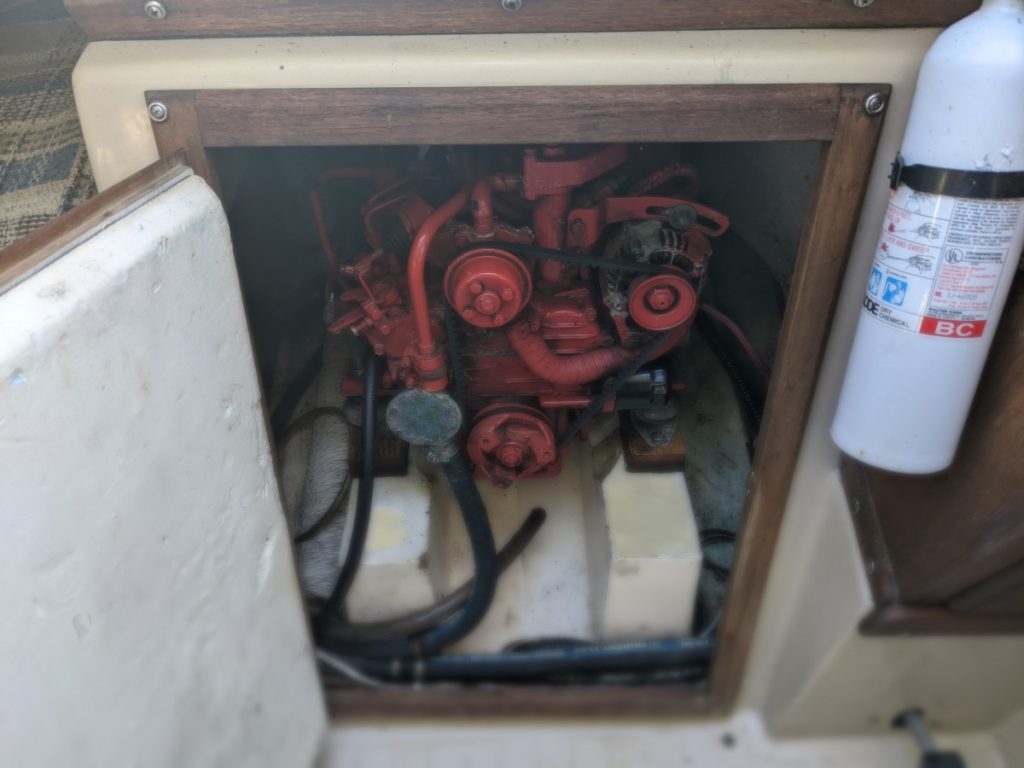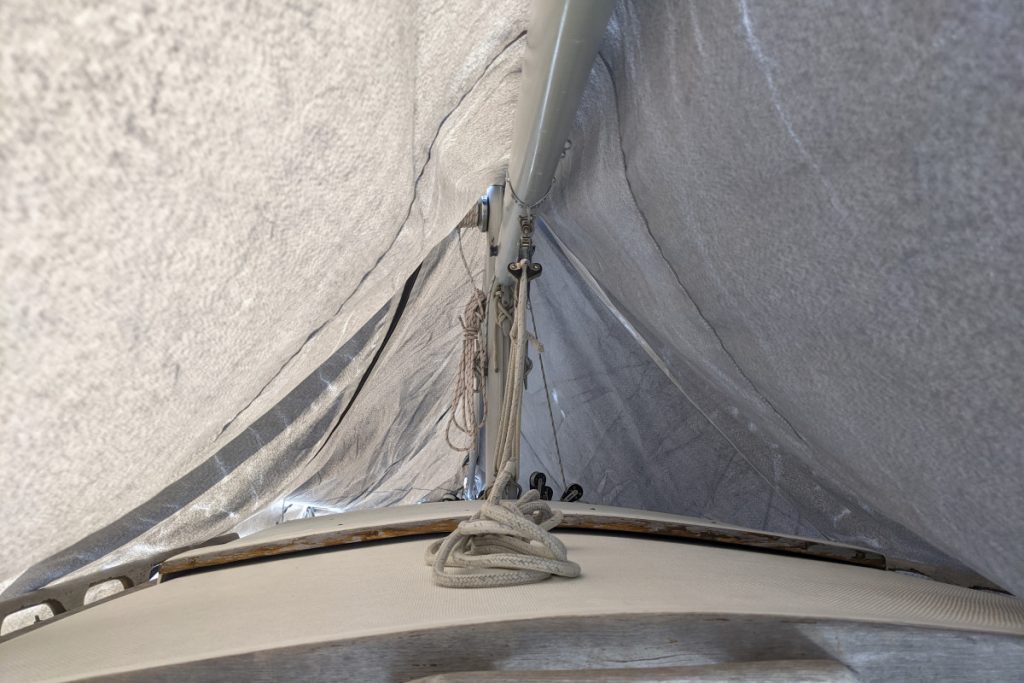
Number 8 will make you question your belief system!
We all know that boats float on water (most of the time!) but do they float on land? In fact, many boats spend their winters floating on land, often propped up on spindly stilts to keep them from falling over. Once water reaches 273° Kelvin, it becomes hard and brittle, and it’s important that boats be moved away from it so that they don’t rupture from the stress. Likewise, many of the internal combustion components of the boat must be made safe from the cold, cold winter in a process known as “winterizing.” So buckle up your long johns, Long John Silver, and enjoy these exciting tips for buckling up your boat’s long johns.
- Eat a Hearty Breakfast: Arr, me hearty…breakfast. If you’ve waited too long to winterize your boat, it’s probably wicked cold. You’ll need a filling and nutritious breakfast to keep you “fueled with food” throughout the day. Or you could just go to Wawa, where the hot new breakfast item is “we’re out of that.” Thanks, supply chain!
- Side Note on Wawa: The hot new Special Reserve coffee variety at Wawa is Huehuetenango, named for the area in the western highlands of Guatemala where it is grown. They’re probably out of it, but it’s quite sporting to ask a Wawa associate about it and see how many times you can say “Huehuetenango” before they ask you to leave. You don’t necessarily have to know how it was pronounced in the original Nahuatl for it to be fun to say—just commit to a string of syllables and repeat it with confidence, as if you were the last of the great east coast coffee barons, and they’ll eventually escort you out.
- Bring a Ladder: A sailboat is a real “fish out of water” on land. They have lengthy keels that make them unnecessarily ungainly when sitting in a boatyard, and unless you have a 72 inch inseam, you probably won’t be able to comfortably reach the boarding ladder. A small step ladder can be helpful in giving you “a leg up” on getting your leg up there.
- Get Ready to Climb: Many adults go their entire adult lives without monkeying around on a jungle gymnasium, but sailors need to be able to scamper around like scamps. An organized boater can plan ahead and bring all of the winterization necessities to deck-level in a single trip up the ladder, but in practice, it may take as many as seven hundred trips to fetch all of the fiddly bits out of the car, one at a time.
- Observe the Engine: Take in its diesely goodness.

- Winterize the Engine Cooling System: (varies) When water expands, it freezes, at least when the temperature is below the freezing point of water. If left inside the engine (on raw water cooled engines) or heat exchanger (on fresh water cooled engines) this expanding water can burst expensive engine doodads (a term of art), and therefore must be removed and/or displaced with (liquid) antifreeze. Engines all have unique needs and personalities, so it’s impossible to generalize this process, but it may look something like:
- Hook up a garden hose (assuming it’s not so cold that the marina’s water has been turned off)
- Shoot yourself with hose multiple times while trying to wrestle it into the cabin like that time you tried to wrangle a python into a wastepaper basket—get yourself good and wet, which acts as a personal lubricant for your mood.
- Clean out the sea strainer
- Fill a bucket with water
- Disconnect the intake from the seacock and stick it in the bucket
- Start the engine and run a bunch of fresh water through, just to get rid of any salty or otherwise weird water, refilling the bucket as necessary with the hose and therefore keeping your jeans appropriately moist
- When some time has elapsed, allow the bucket to drain and prepare to dump in the propylene glycol antifreeze
- Frantically try to open the bottles of propylene glycol and remove their foil safety seals with one hand while the engine bangs away 18 inches from your ear, adding to the wonder of it all
- Question why bottles of antifreeze have foil safety seals—was there an urban legend in 1982 that someone had put razor blades in the bottles so that when unsuspecting children chugged entire gallons of propylene glycol, they would get a nasty surprise at the end?
- After clawing your way through the seal or opening it with an improvised tool of less sophistication than the average prison shank, dump in the antifreeze and let the engine suck it through
- If possible, have a buddy confirm that pink froth is appropriately being spewed out the stern of the boat onto your step ladder
- Before completely running out of antifreeze, shut off the engine and seal in the freshness
- Prepare to Remove the Engine Oil: The engine oil must be changed on a regular cycle or annually, whichever comes first. One common hypothesis is that oil should be changed in the fall because “used oil turns acidic and you don’t want to leave it in there like that all winter.” That may or may not be factually correct, but there’s also the old sea shanty, “Change the oil in spring, blow a ring; Change the oil in autumn, wait, engines haven’t been invented yet.” On an automobile, there is ample room under the engine for an oil drip pan, into which the old oil can be conveniently conveyed via gravity. Even true Pineys wouldn’t simply drain an engine’s oil directly into their driveways…they would drain it into the crisper drawer of a refrigerator from the earliest days of crisper drawers and then walk it ten paces into the woods before dumping it. But there isn’t nearly enough room under a sailboat’s engine for a crisper drawer, so it must be pumped out into a suitable container.
- Go Back to Wawa for a Suitable Container: Wawa is probably out of stock of anything that you’d consider drinking, but just as time and tide wait for no man, Rotella 15W-40 and diabetes wait for no one to sip down a half gallon of sweet tea. Do the world a favor and jettison 64oz of Diet No-Name Arnold Palmer.

- Remember to HAVE FUN!: To have an AMAZING time pumping out the oil, squirm upside down into the starboard quarterberth as if you were trying to limbo into the torpedo tube on a submarine. FUNLY stick your non-dominant hand through a small port and blindly operate the oil pump while your partner jams an empty LEMONY FRESH bottle of Diet No-Name Arnold Palmer into the engine bay and attempts to collect the black gold/Texas tea. LET THE MAGIC HAPPEN! (This step may vary greatly due to engine compartment layout and aversion to fun.)
- Replace the Oil Filter: Many new boaters are shocked to find out that their ability to unscrew an oil filter is completely based on whether or not they’re a good person. Does it matter if you put oil on the seal when you screwed it in? No. But what if you studiously followed the guideline to hand-tighten only? Irrelevant. The only determining factor is the subjective assessment of one’s qualities as a human. Marine oil filters are precisely sized to be too small for a commercially-available filter wrench and too large for your largest set of Channellocks, so if you can’t get it off by hand you know you’re going to be hammering a screwdriver through it and hoping that that gives you enough purchase to get it off before your bilge fills with the oil pouring out of its mangled, jagged wounds, but that anticipation, and the knowledge that it’s based solely on your karmic judgement, is the spice. So here’s to hoping that you’re a bad person and that it comes off with no problem.
- Beware the Dread Cthulhu: An important part of winterization is removing the water from the fresh water system, so that it can’t freeze and “gum up the works” by exploding the works. It’s entirely possible that by that point in the season, a bleach-resistant Great Old One has reformed in your water tank. Do not taunt the Cthulhu. Simply provide an offering of propylene glycol and pump it through the sinks and head until it runs pink with horror. In his house at R’lyeh, dead Cthulhu waits dreaming.
- Cover the Boat: An average boat cover can contain upwards of four million square yards of fabric. It can be hard to picture how much fabric that is, so just imagine that if all the threads that it contained were unwoven and placed end-to-end, the resulting string would go all the way to the dinosaurs. Regardless of whether or not the string is hypoallergenic, that’s nothing to sneeze at! Fortunately, there are zippers, clasps, hasps, and asps every few inches around the border of a cover, so it’s always clear which way it goes. A cover certainly won’t keep your boat from getting dirty over the winter (although the mechanism through which it becomes soiled beneath the cover is still unknown to science), but it does demonstrate to the sea deities that you tried.

Armed with this knowledge, a winter of not boating can be just as fun as a summer of boating. Enjoy!
Click here for 26 RADICAL letters of the alphabet. Number P will make you eat your own face!